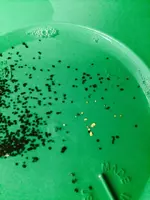johnedoe
Bronze Member
- Joined
- Jan 15, 2012
- Messages
- 1,489
- Reaction score
- 2,242
- Golden Thread
- 0
- Location
- Oregon Coast
- Detector(s) used
- White's V3i, White's MXT, and White's Eagle Spectrum
Cleangold sluice & prospectors pan, EZ-Gold Pan, and custom cleanup sluice.
- Primary Interest:
- Other
Amazon Forum Fav 👍
Upvote
0









